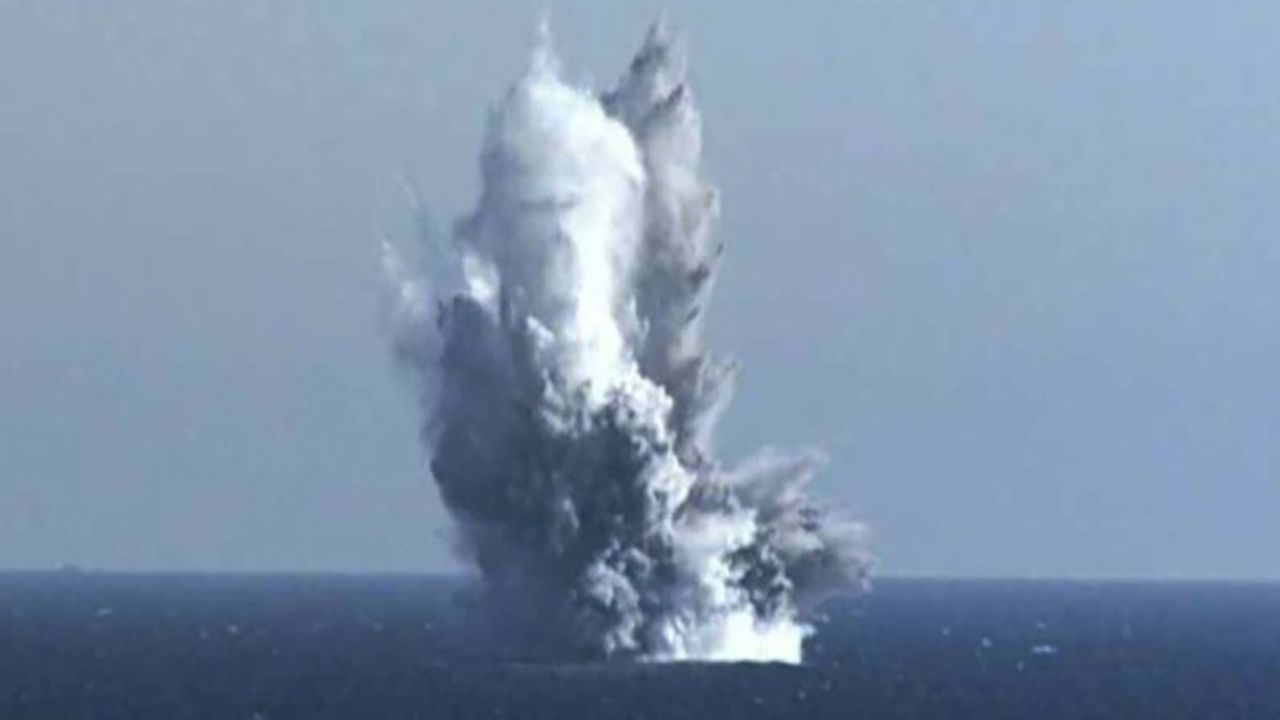On March 24, North Korea claimed it had tested an underwater drone capable of carrying a nuclear warhead and unleashing a “radioactive tsunami.” Analysts noted that, in some ways, Pyongyang’s new weapon appears similar to Russia’s nuclear-capable Poseidon torpedo.
The drone called the “Unmanned Underwater Nuclear Attack craft ‘Haeil,'” reportedly underwent testing from March 21 to 23, according to a government-run Korean Central News Agency (KCNA) report.
The new North Korean drone allegedly conducted the test on March 23 in the waters off its east coast, detonating a non-nuclear payload after traveling underwater for more than 59 hours at a depth of 80 to 150 meters (260-500 feet).
The objective of the underwater nuclear strategic weapon is to covertly infiltrate the enemy zone and launch an underwater explosion to create a ‘super-sized radioactive tsunami’ capable of destroying hostile naval strike groups and key operational ports, the KCNA report said.
According to the KCNA report, the weapon has been under development since 2012 and has undergone more than 50 tests in the last two years.

This week’s test validated its dependability, safety, and lethal strike capability, according to the KCNA report, noting that the drone can be deployed from any port or towed by a surface ship to commence operations.
Experts believe North Korea is flaunting its nuclear capability to Washington and Seoul. Analysts, though, have their doubts about North Korea’s assertions.
Leif-Eric Easley, associate professor of international studies at Ewha Womans University in Seoul, said that Pyongyang’s recent claim to have a nuclear-capable underwater drone should be viewed skeptically because North Korea provided no proof.
Ankit Panda, a nuclear policy expert at the Carnegie Endowment for International Peace, wrote, “I tend to take North Korea seriously, but can’t rule out the possibility that this is an attempt at deception/psyop.”
“Would be ill-advised to allocate limited fizmat (fissile material) for a warhead to go in this thing, IMO, vs. more road-mobile ballistic missiles,” he added.
Even so, North Korea intends to warn the United States and South Korea that there are many different ways nuclear weapons could be used during a conflict, making it difficult for the allies to anticipate and target them.
Similar To Russia’s Poseidon?
State media published a picture of Kim smiling next to a sizable torpedo-shaped object, although it did not specify that it was the new drone. Additional images displayed the object’s undersea course in tracks and surface-level explosions.
Panda said that the weapon’s concept was akin to Russia’s Poseidon nuclear torpedoes, a new class of retaliatory weapon designed to create destructive, radioactive explosions in coastal areas.
However, North Korea’s alleged new underwater weapon differs significantly from the Poseidon. It is conventionally propelled and is not launched from a submarine. Therefore, it would not be comparable to the Russian Poseidon.
The Poseidon torpedo, developed by Russia, is a submarine-launched, nuclear-powered unmanned underwater vehicle that can carry conventional and nuclear warheads.
Using its nuclear propulsion system, the Poseidon could travel almost indefinitely. Russia claimed that Poseidon could unleash massive nuclear tsunamis obliterating coastal US or nearby cities.
The latest tests by North Korea came as South Korean and American troops launched their largest amphibious landing drills in years.
North Korea stated that military exercises by the United States and South Korea compel its forces to prepare for all-out war and prioritize its nuclear force’s quality and quantity.
Pyongyang has long objected to exercises conducted by the South Korean and US military, claiming they are a prelude to an invasion of the North.
On the other hand, South Korea and the United States insist the exercises are solely defensive. They have condemned the North’s tests as destabilizing and violating UN sanctions.
On March 23, the US and South Korea concluded 11 days of their regular springtime drills, known as Freedom Shield 23, while additional field training exercises are ongoing.
Meanwhile, Pyongyang has also conducted a series of missile tests recently. Analysts noted that missile tests by North Korea are blatant warnings that it could attack US cities.
Furthermore, recent short-range missile launches are an effort by North Korea to strengthen the command and control of its self-declared tactical nuclear weapons units targeting South Korea and Japan.
- Contact the author at ashishmichel(at)gmail.com
- Follow EurAsian Times on Google News